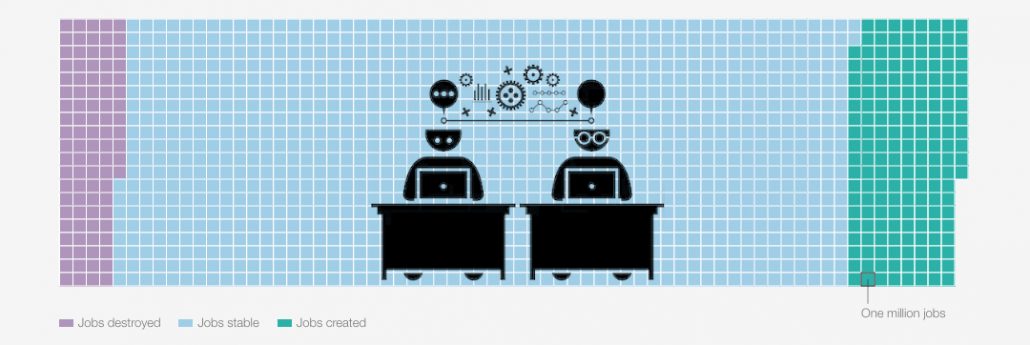Artificial intelligence (AI) is undoubtedly one of the most influential topics of our time. Companies, educational institutions and HR departments are faced with the challenge of realistically assessing and exploiting the potential of this technology. Because.
“We tend to overestimate the impact of a technology in the short term and underestimate it in the long term.”
Roy Amara
“Amara’s Law” goes back to Roy Amara (1925-2007). He was an American computer scientist, futurologist and co-founder of the Institute for the Future (IFTF). His principle states that in the initial phase there are often exaggerated expectations and hype, which are then disappointed. In the long term, however, the technology has a more profound effect than was initially foreseeable. This principle can be seen, for example, with the internet or smartphones – initially overestimated, later revolutionary.
The current AI hype: expectations and reality
In recent years, the hype surrounding AI technologies has reached new heights. Companies are investing considerable sums in AI projects in the hope of achieving ground-breaking efficiency gains and competitive advantages. According to a study by eco – Association of the Internet Industry and Arthur D. Little, the widespread use of AI could lead to a growth in gross domestic product of over 13% by 2025, which corresponds to a total potential of around 488 billion euros.
However, despite these promising figures, reality often falls short of expectations. Many companies face the challenge of integrating AI into their existing processes in a meaningful way. Although the technology is advanced, it is not always mature enough to achieve the ambitious goals immediately.
Long-term effects: Opportunities and challenges
While short-term effects are overestimated, the long-term impact of AI could be more profound than we can imagine today. According to forecasts, AI will contribute over 15.7 trillion US dollars to the global economy by 2030, creating 133 million new jobs. These figures suggest that AI could not only transform existing business models, but also create entirely new markets and professions.
At the same time, there are concerns about the labor market. Some studies (including the McKinsey study mentioned above) predict that up to 30% of the global human workforce could be replaced by intelligent robots by 2030. This underlines the need to develop education and retraining programs to meet the demands of a changing world of work. To avoid losing valuable, loyal employees in this shift, upskilling is recommended, for example through web-based training or online courses.

Source: World Economic Forum (Future of Jobs Report 2025)
Between euphoria and skepticism: a balanced view of AI
The history of AI is characterized by phases of euphoria and disillusionment. There was an AI boom in the 1980s, followed by an “AI winter” in which interest and investment fell sharply. Today, we are once again at a point where expectations are high. But it is crucial to keep a realistic view and recognize both the possibilities and the limitations of the technology.
Recommended action for the coordinated introduction of AI tools
Public institutions and small and medium–sized enterprises in particular are faced with the challenge of where to start.
Instead of “all aboard the hype train” chaos or “missing the train”, set up a bold strategy and stick with it.
One possible solution could be the following agile step-by-step plan.
- In a cross-functional, cross-role workshop, work out where AI can solve which problems and how
- Set up a suitable data strategy (the input defines the quality of the output, see also Big Data & Shit-In-Shit-Out principle)
- Define guidelines on the use of AI (what can be used by whom and for what) – this prevents everyone from experimenting, which in most cases wastes time and in the worst case causes serious problems
Tip: Uncertainty kills creativity. However, if employees can let off steam in a predefined sandbox, you will achieve measurable results that can be compiled and optimized in a controlled manner
- Stay open: Once the tool landscape, including guidelines, has been created, it is not finished forever. New providers, tips from employees or inspiring use cases can open up new avenues
Conclusion: realism as the key to success
For companies, educational institutions and HR departments, this means that they should follow developments in the field of AI closely and at the same time question them critically. It is important to find a fearless balance between innovation and pragmatism in order to make the most of the opportunities offered by AI without losing touch with reality.
